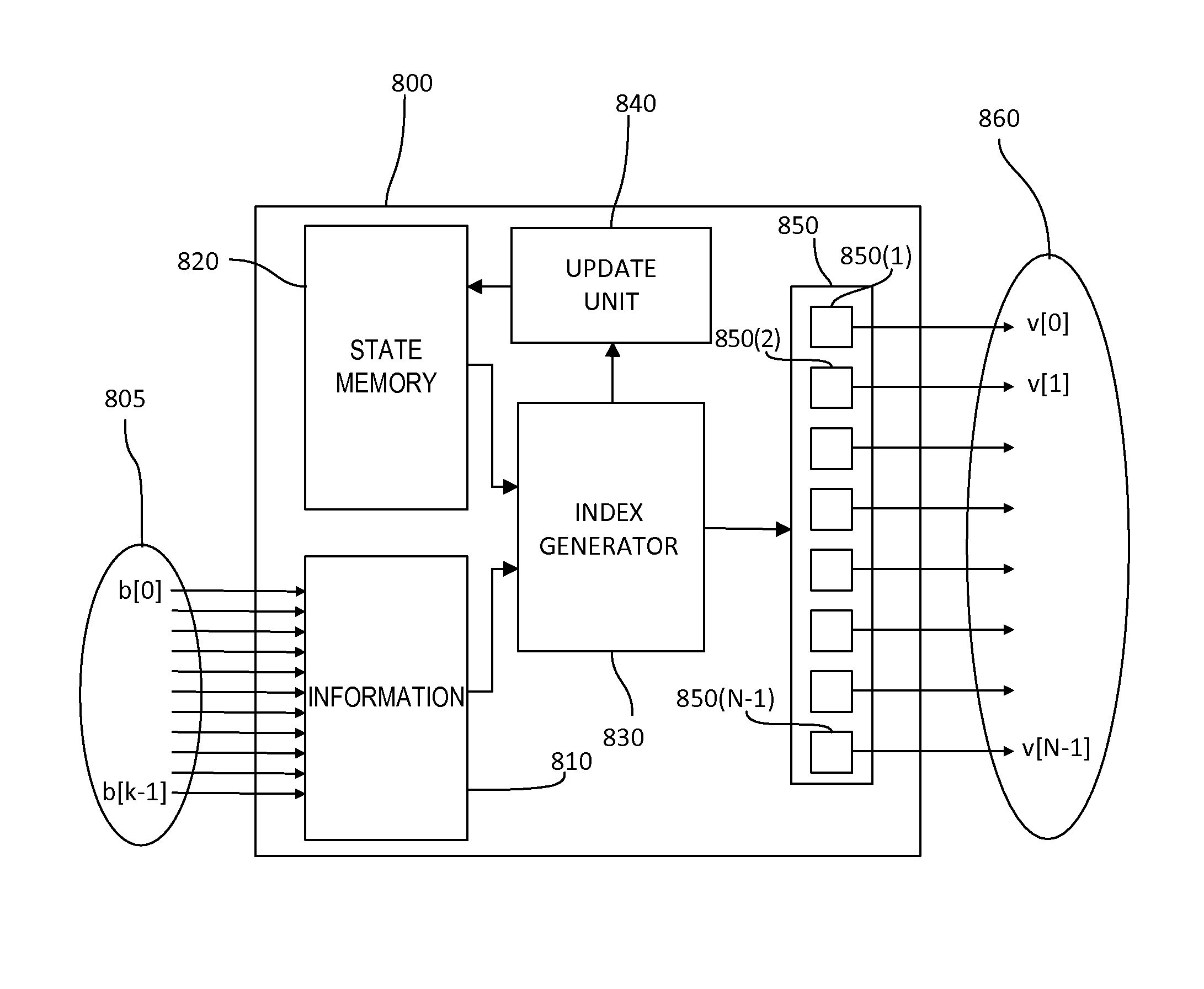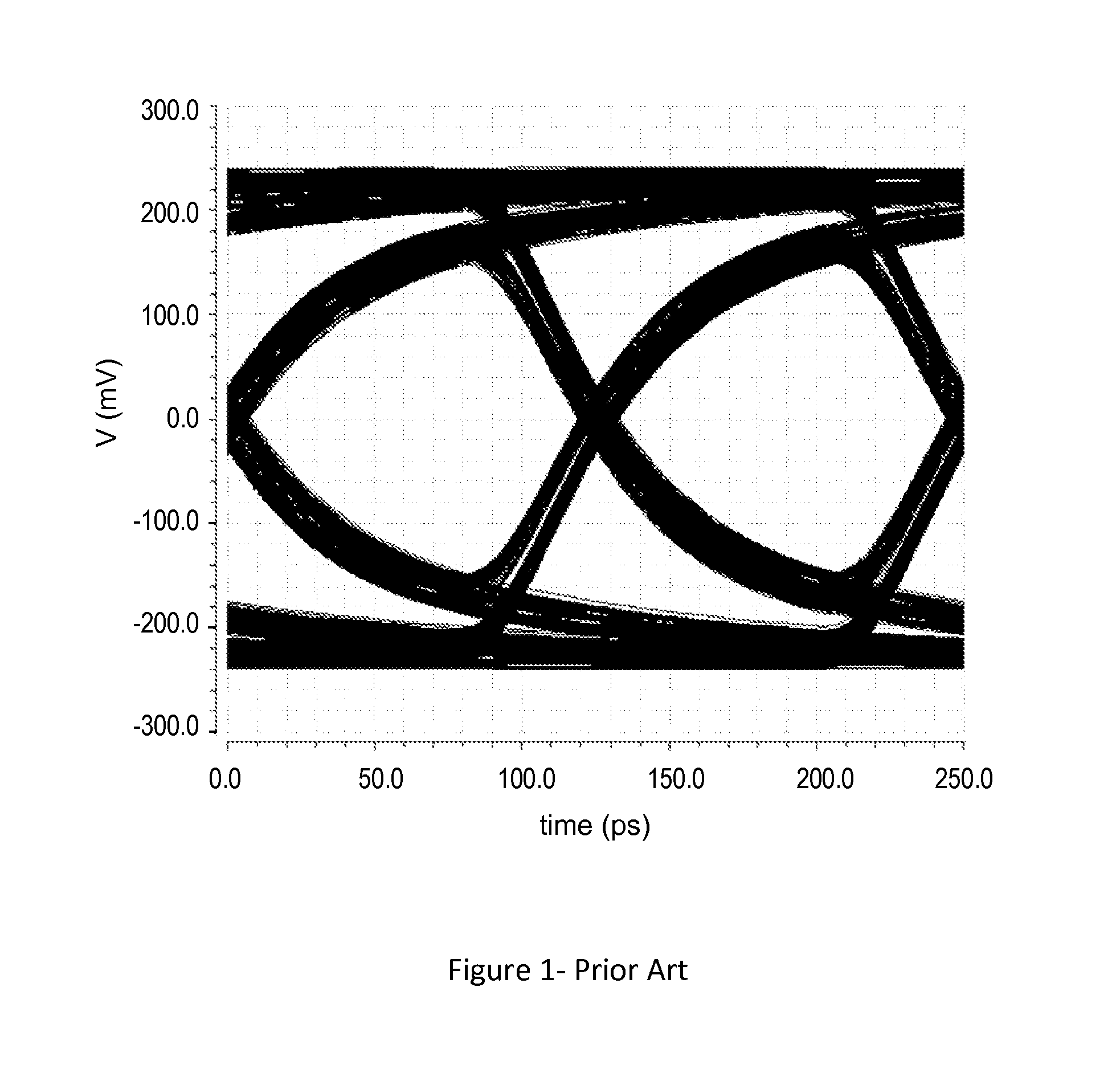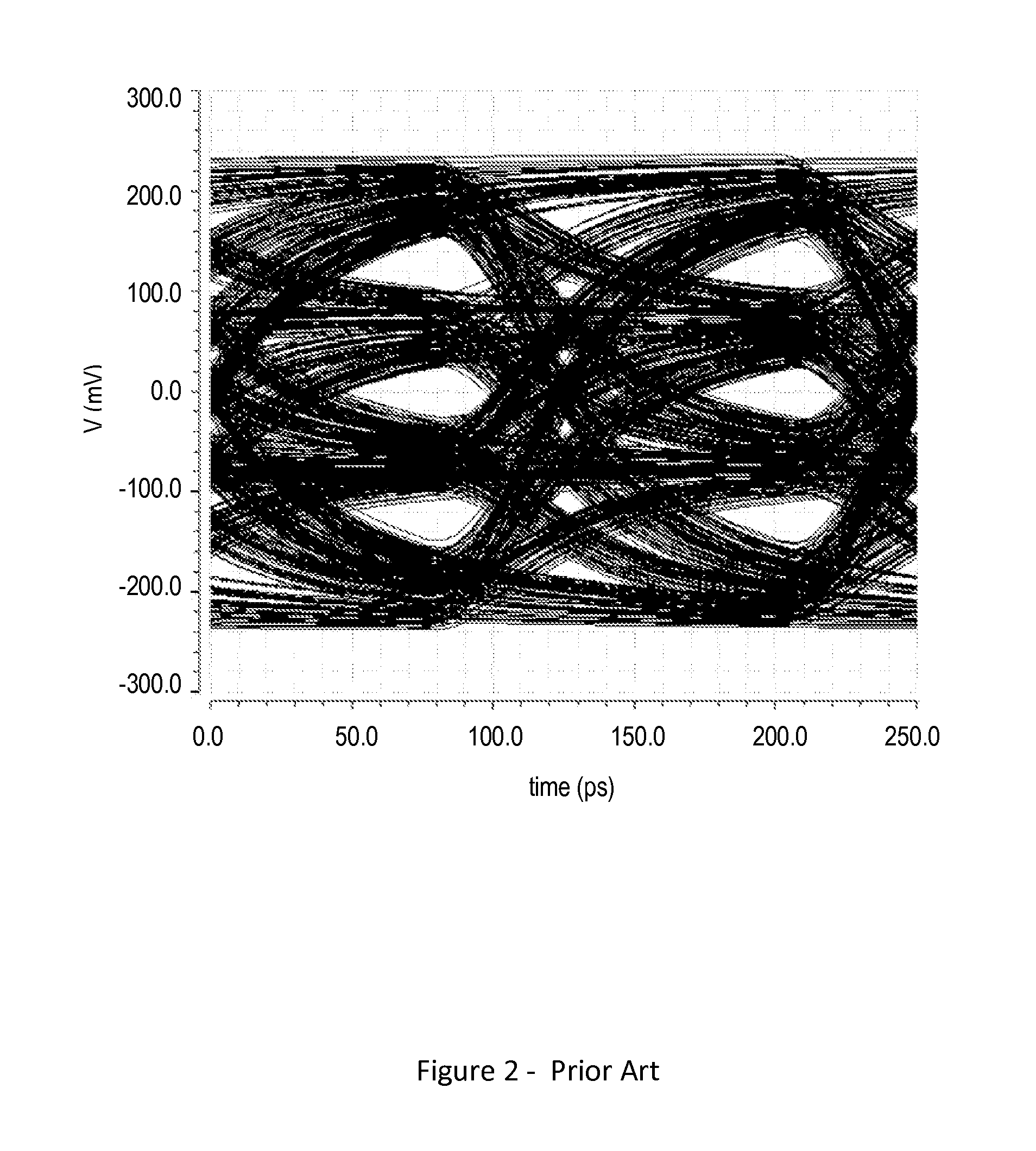Finite state encoders and decoders for vector signaling codes
a vector signaling and encoder technology, applied in the field of communication, can solve problems such as preventing a receiver from understanding exactly, imposing on the signal some unwanted noise and/or timing uncertainty, and introducing such noise or uncertainty
- Summary
- Abstract
- Description
- Claims
- Application Information
AI Technical Summary
Benefits of technology
Problems solved by technology
Method used
Image
Examples
Embodiment Construction
[0078]Various embodiments of communication systems, transmitters, receivers, and methods for transmitting and receiving over various types of channels are described herein. Various examples herein are not meant to be limiting.
[0079]In the typical example, information is represented by physical quantities or values, such as electrical signals, optical signals or radio signals and a transmitter receives that information in electronic or electrical form and generates a signal that it sends to a channel, typically periodically. The channel may introduce or impose on the signals some unwanted noise and / or timing uncertainty. That might cause the receiver to misinterpret the signal.
[0080]Eye diagrams represent a received periodic signal where the signal over various periods are overlaid. One measure of performance of a high speed chip-to-chip or device-to-device communication system is the eye-diagram of the received waveforms, possibly after additional processing. The eye diagram corresp...
PUM
 Login to View More
Login to View More Abstract
Description
Claims
Application Information
 Login to View More
Login to View More - R&D
- Intellectual Property
- Life Sciences
- Materials
- Tech Scout
- Unparalleled Data Quality
- Higher Quality Content
- 60% Fewer Hallucinations
Browse by: Latest US Patents, China's latest patents, Technical Efficacy Thesaurus, Application Domain, Technology Topic, Popular Technical Reports.
© 2025 PatSnap. All rights reserved.Legal|Privacy policy|Modern Slavery Act Transparency Statement|Sitemap|About US| Contact US: help@patsnap.com



